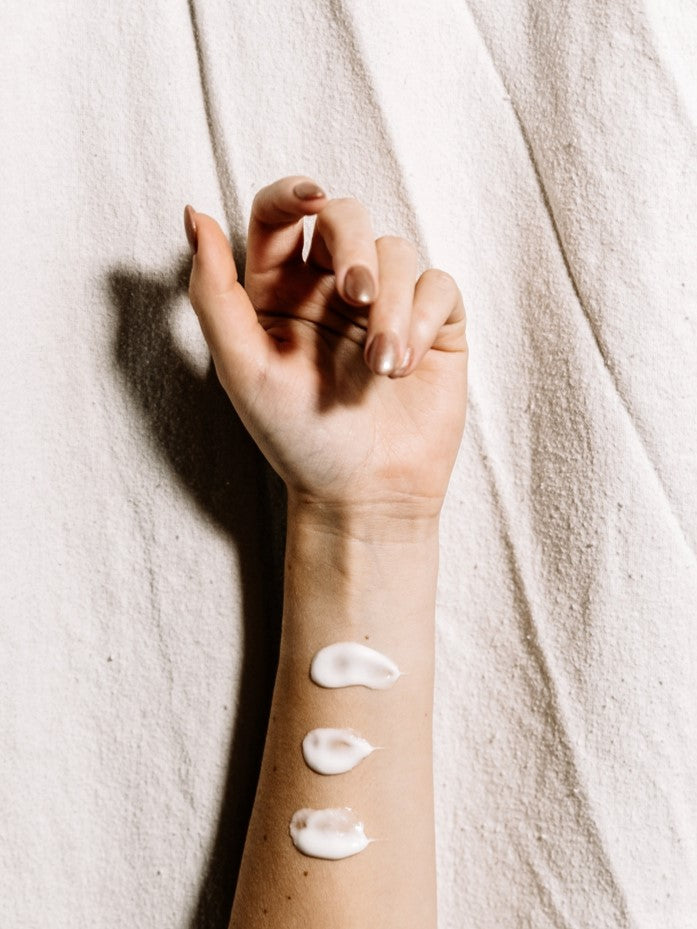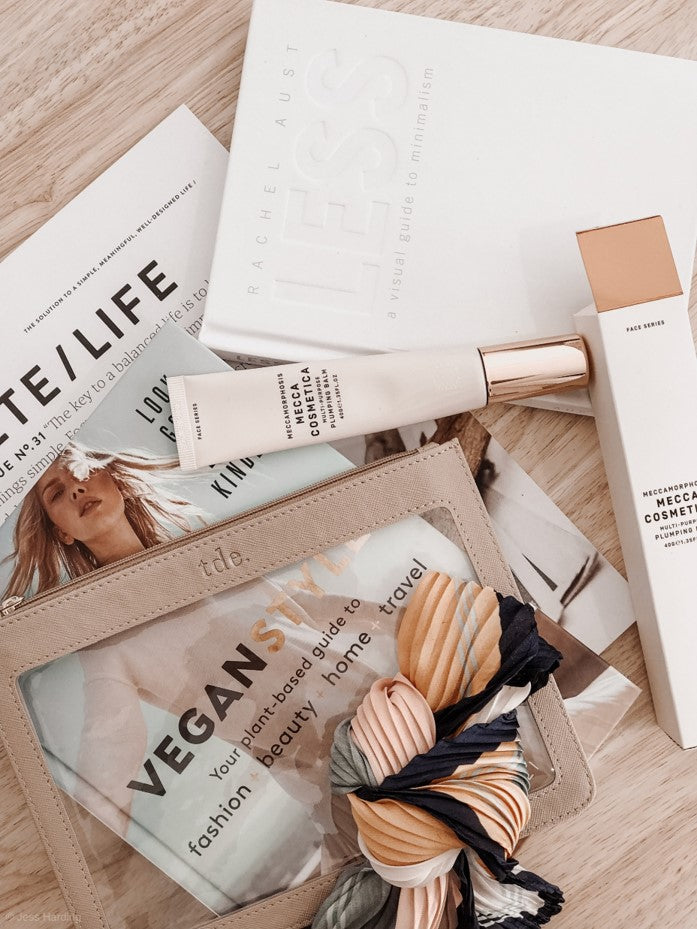We are surrounded by toxic chemicals in everyday products. A recent study found that there are more than 84,000 chemicals on the market and we come into contact with many of them every single day. What is even scarier, is that only 1% of them have been studied for safety. Lisa Jackson, an administrator of the EPA, stated that “a child born in America today will grow up exposed to more chemicals than any other generation in our history.” These chemicals leave us susceptible to unforeseen health issues and can even result in death. Due to the Food, Drug, and Cosmetics Act of 1938 that only requires food, drugs, and medical devices to have FDA approval, chemicals in the cosmetics industry are completely unregulated. The law nor the FDA require any specific tests to demonstrate the safety of cosmetics products nor do they require companies to disclose safety information with the FDA. Manufacturers are not even required to register their cosmetics formulas with the FDA. The cosmetics industry is free to use thousands of synthetic chemicals that end up on and in consumers’ bodies. Even with regulation in other industries, thousands of harmful chemicals easily bypass FDA regulations and end up in consumer’s hands.
To protect ourselves and our families from as many seen and unseen dangers as possible, Organica has compiled the 5 most common toxic chemicals in everyday products, surprising places to find them, why they are a health concern, and how to avoid them in the future.
1. BPA- Bisphenol A
What is BPA?
BPA (bisphenol-A) is a synthetic estrogen used in many plastic products and resins used for inner coatings of food and beverage cans. An average of 6 billion pounds of BPA are produced each year.
Where can I find BPA?
- Canned Goods- BPA is often found in the epoxy resin lining of metal cans like those used for soda and canned fruits and vegetables. BPA levels are often even higher in foods that require high heat canning and sterilization processes. The main source of exposure is food and drinks stored in containers that contain the chemical.
- Receipts- Receipts printed on thermal paper are lined with BPA. This includes airline receipts, movie tickets, and shopping receipts. BPA easily transfers from your hand to the receipt and enters your body through your skin or mouth.
- Plastics- Plastic products are often made with BPA. These products include plastic bottles, baby bottles, children’s toys, plastic wrap, plastic cubs, and even medical devices.
- Socks and Activewear- In a recent study, BPA was found in 91% of children’s socks! Synthetic materials used in activewear, like nylon and spandex, contain high levels of BPA and parabens.
- Other Products- BDP has also been found in dental sealants, coffee pots, CD’s, and DVD’s
What are the health concerns of BPA?
BPA is a toxic chemical found in everyday products that can be absorbed through skin contact or ingested from leaking into foods from packaging. It is an endocrine disruptor which means exposure could lead to hormone imbalance, infertility, increased risk of reproductive cancer, low sperm counts, and other hormone-related problems. It is also linked to increased blood pressure, asthma, obesity, and breast cancer. A National Health and Nutrition Examination Survey study found detectable levels of BPA in the urine of 93% of people (6 and up) who were tested. Additionally, it has been found in breastmilk and newborn babies, suggesting that it might store in the body and could potentially cross the placenta. A more recent study proved that even one-time exposure to BPA can create health problems within only a few fours. The study found that subjects who drank from BPA-lined cans had 16 times higher levels of BPA in their urine within 2 hours and a rise in blood pressure during the same period. This study proved that BPA can almost immediately increase hypertension, blood pressure problems, and heart rate variability. China, France, Denmark, Belgium, and Austria all strictly limit BPAs use in food, and
Canada has banned BPA from children’s products in 2010, while BPA remains prominent in the US diet.
How do I avoid BPA?
To avoid BPA, avoid plastics and canned goods. Skip the receipt at the store or ask the cashier to put it directly into your bag. Avoid socks and activewear made with materials like spandex and nylon. Try to purchase BPA-free products but make sure to check the labels for harmful alternatives. Often BPA-free alternatives contain substitutes such as bisphenol-S or bisphenol-F, both of which were found to have just as much of a hormonal effect (or more) than bisphenol-A.
2. Phthalates
What are Phthalates?
Another toxic chemical found in everyday products is Phthalates. Phthalates are used to soften and increase the flexibility of plastics. This can be helpful in lubricating cosmetics and skincare products.
Where can I find Phthalates?
- Cosmetics- Phthalates are found in deodorants, hair sprays, hair gels, and nail polishes. They are used to keep nail polish from cracking after it dries, soften the stiffness of hairsprays, and as a solvent in fragrances.
- Kids Products- They are used as a plastic softener in kids products like baby bottles, plastic baby plates, and children’s toys, They are also found in baby shampoos, baby lotions, and baby products.
- Other Products- Phthalates are also found in cans, plastic cling wrap, plastic water bottles, and meat and dairy products.
What are the health concerns of Phthalates?
Phthalates are major endocrine disruptors that interfere with natural hormone regulation and protection. They are particularly harmful to children’s development. Exposure to Phthalates can result in changes to reproductive organs and hormone production.
How do I avoid Phthalates?
In order to avoid this toxic chemical in everyday products, swap out cans and plastic bottles for glass and stainless steel options. Try beeswax wrap instead of conventional plastic clings wrap. Swap plastic baby plates for bamboo plates, cups, and utensils instead. Mason jars are a cute and safe alternative for drinking and storage as well. Try to eat organic and grass-finished meat and dairy to avoid contaminants in these products. Avoid any cosmetic that has “fragrance” or “perfume” listed under ingredients and opt for phthalate-free and fragrance-free cosmetics.
3. Parabens
What are Parabens?
Parabens are hormone disruptors that are linked to cell proliferation and cancers. They are used as preservatives in pharmaceutical, cosmetic, and food products.
Where can I find Parabens?
- Cosmetics- Parabens are commonly found in cosmetic products like deodorants, shampoos, lotions, facial cleansers, sunscreens, shower gels, and scrubs.
- Food- Parabens are used as preservatives in food. Products that contain parabens include beer, desserts, soft drinks, pickles, frozen dairy products, jams, and sauces.
- Pharmaceuticals- This chemical is also used as a preservative in many pharmaceuticals.
What are the health concerns of Parabens?
Paraben has hormonal properties that mimic estrogen at an extremely weak level. Estrogen causes both healthy and cancerous cells to divide. Parabens can therefore lead to cell proliferation which can increase chances of cancer. The chemical has been found present in breast cancer tumors and other cancerous tissues. In a recent study, parabens were found in the urine of males after lotion with parabens was applied to the subject’s skin. This study shows that parabens are absorbed, metabolized, and excreted and have the potential to cause internal harm.
How do I avoid Parabens?
Luckily, if items contain parabens they must be listed in the ingredients. Be sure to check labels for: Methylparaben, Ethylparaben, Propylparaben, Butylparaben, Isoproylparaben, and isobutylparaben. Many companies have started removing this toxic chemical and putting labels on their products to indicate it. Be on the lookout for paraben-free labeled products. Choose products that use safer, more natural preservatives like Grapefruit seed extract, potassium sorbate, sorbic acid (vitamin c), tocopherol, and essential oils.
4. Heavy Metals
What are heavy metals?
Heavy metals are generally referred to as those metals which possess a specific density of more than 5 g/cm3 and adversely affect the environment and living organisms.
Where can I find heavy metals?
- Ceramic dinnerware- The glaze, clay, and paint used in ceramic goods often contain lead and cadmium. These toxic metals can then leak into food when microwaving or through cracks in the dishware. Additionally, after ceramic products have been in the dishwasher, the glaze will break down leading to exposure of the heavy metals.
- China/porcelain dishes- China and Porcelain dishes and glasses made before 1970 contain very high levels of lead and cadmium. The FDA only began testing for dinnerware safety in 1970, so it is best to avoid dishes made before this date.
- Glassware- Glass contains high levels of both lead and cadmium. These heavy metals are normally found in the glaze of the glassware. Crystal glassware, otherwise known as leaded crystal, has lead as one of its main ingredients. Consuming acidic drinks like wine in crystal glass is not a good idea due to the high likelihood of heavy metal contamination.
- Cosmetics- Lead, cadmium, chromium, manganese, and aluminum have all been found in lipstick, lip glosses, mascaras, blush, and eyeshadows. Aluminum is especially prominent in deodorants. It is important to note that natural makeup alternatives made from talc and clay are often still contaminated with heavy metals like lead and cadmium.
- Other Products- Heavy metals are also found in thermometers, lamps, fruits and vegetables, batteries, seafood, and dental fillings.
What are the health concerns of heavy metals?
Heavy metals are toxic chemicals found in everyday products that negatively affect people's health. Exposure is linked with lower energy levels and damages to the brain, lungs, kidney, liver, blood composition, and other important organs. Long-term exposure can gradually lead to physical, muscular, and neurological degenerative processes that imitate diseases such as multiple sclerosis, Parkinson's disease, Alzheimer's disease, and muscular dystrophy. Repeated long-term exposure may cause cancer. Heavy metals can be very harmful to mothers and children since they have the potential to cross the placental barrier. This means if pregnant women are exposed to heavy metals, they are also exposing their unborn child which could damage their nervous system and brain development. These chemicals also increase the chances of having a miscarriage, stillborn birth, or child with a birth defect. Heavy metals can also enter breast milk.
How do I avoid heavy metals?
To avoid heavy metals, start using aluminum-free personal care products and avoid using aluminum in cooking. Avoid high levels of mercury by limiting or avoiding seafood. You can also get your water and home tested for the presence of heavy metals by a professional. Replace your old mercury thermometers with newer digital ones. Avoid commercial color cosmetics and opt for organic, non toxic alternatives.
5. Flame Retardants
What are flame retardants?
Another toxic chemical in everyday products is flame retardants. These chemicals have been applied to materials since the 1970s to prevent the start or slow the growth of a fire. They claim to decrease the ability of materials to ignite, but recent data shows they might not even be effective in preventing fires. These chemicals can get into air, water, and soil during manufacturing and can also leak directly from products. They are also released through uncontrolled burning and dismantling electronics.
Where can I find flame retardants?
- Furnishing- Flame retardants are often found in foam, mattresses, curtains, carpets, upholstery, and fabric blinds.
- Electronics- Computers, phones, laptops, televisions, household appliances, wires, and cables all contain these toxic chemicals.
- Construction materials- Electrical wires and cables and insulation foams used for construction often contain harmful flame retardants.
- Transportation products- Fire retardants are commonly found in cars, trains, and other modes of transportation within the seats, seat covers, filings, bumpers, and overhead compartments.
What are the health concerns of flame retardants?
The health concerns linked to exposure to flame retardants include endocrine and thyroid disruption, harmful impacts to the immune system, reproductive toxicity, cancer, adverse effects on fetal and child development, and neurologic damage. Children are particularly vulnerable to flame retardant’s toxic effects since their brains and organs are still developing. Children’s hand-to-mouth behavior and proximity to the floor increase exposure potential. Researchers found children have higher concentrations of flame retardants in their bodies than adults.
How do I avoid flame retardants?
Many flame retardants have been removed from the market. Sadly, they do not easily break down and can bioaccumulate in people and animals over time, and can remain in the environment for years. Avoid labels that claim products are fire-resistant or contain flame retardants. To reduce exposure, try to keep dust levels down by wet mopping, vacuuming, and installing a good ventilation system. Wash your hands and your children's hands frequently to reduce hand-to-mouth contact exposure. Purchase baby products and furniture filled with cotton, polyester, or wool instead of polyurethane foam, a common flame retardant.
There is a disheartening plethora of toxic chemicals in everyday products. A great first step is buying USDA-approved certified organic products which significantly reduces your exposure to these toxins. We hope you take our specific advice on how to avoid BPD, parabens, phthalates, heavy metals, and fire retardants to enjoy a safe and healthier lifestyle.
Sources:











